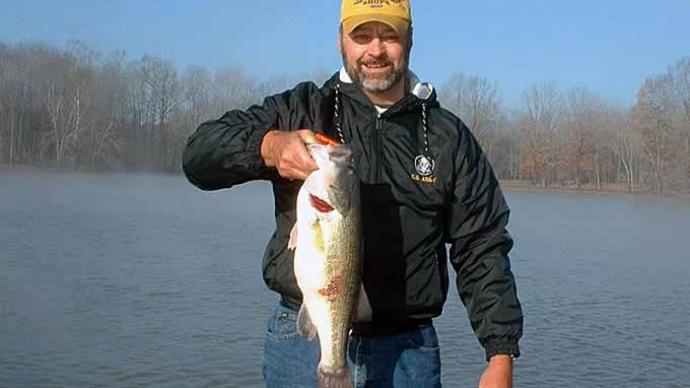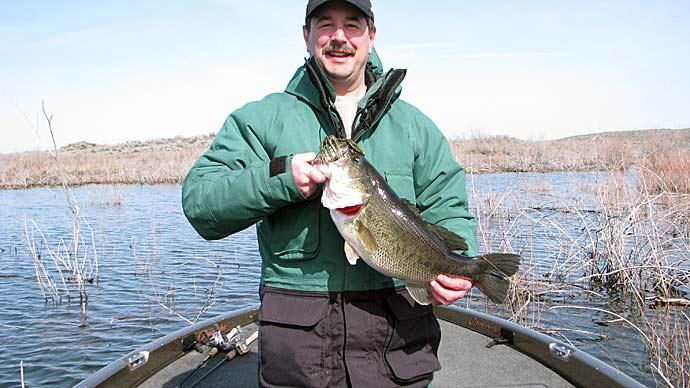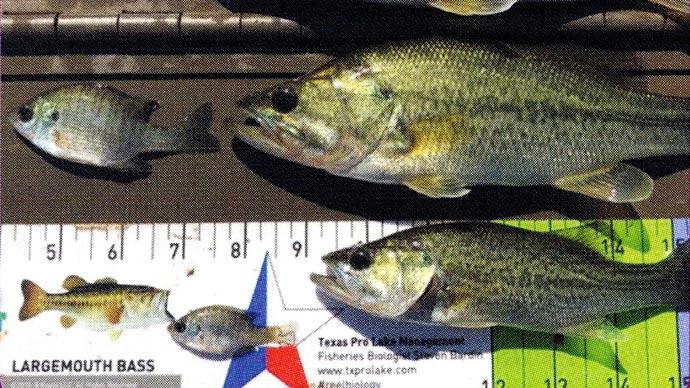Way back when, in 1983 to be exact, I met Kenny Dry den. Kenny hails from Austin, Texas, and is the consummate outdoorsman. He loves to hunt, fish, and teach people about all the above. Kenny was the first man I met who built his own hunting vehicle for the hunting ranch. He bought an old Bronco/ Blazer-looking vehicle dirt cheap, cut the top off, took the doors off, welded a platform on the back and raised the back seat high enough to be able to look out over the top of the south Texas brush on his ranch northwest of Laredo, Texas. He and 14 of his buddies partnered to buy this ranch, mostly to hunt, but also to fish.
I was three years out of college and looking at this pond management thing as a career direction, and it was attractive. Kenny hired me to come to Rancho Pinto Valle to evaluate a nice-sized lake on the ranch. When I arrived on the given day, a Friday afternoon, he pitched some lawn chairs into his hunting vehicle and invited me to ride into the ranch, go to the lake, and watch what he'd been watching. I got to ride on top, my head about 9-10 feet above the ground, and was able to look over the top of a sea of brush. One of the old sayings about south Texas is everything there sticks, stings, or bites. I must say, that's the truth. Every bit of the brush country is cactus, mesquite, blackbrush, huisache, or something akin. What do they have in common? Needles or thorns.
As we made our way up and down gentle slopes, driving through the senderos, or cleared paths, I could see the lake in the near distance. Kenny had talked on the phone with me several times about this lake. They called it the "Pinto Valle" Lake, named after the ranch. It covered fifty plus acres when it was full, but it normally took a tropical storm from the gulf or monsoon rains drifting over from western Mexico to keep it full. Between storms, the Pinto Valle shrunk. Over the next few years, I watched that lake overflow its spillway and then drop by two- thirds its volume.
We taxied up to the edge of the lake about an hour before dark. Kenny pulled out the lawn chairs, a cooler filled with snacks and adult beverages in bottles, and we watched the show he didn't tell me about. As the sun lowered itself across the lake, we watched cookie-cutter- carbon-copy largemouth bass from 10-12" long fly out of the water, some airborne as much as 30 inches above water's surface. They were chasing dragonflies. Looking closely, I saw thousands of dark little dragonflies hovering near the surface of the lake. Those bass were feeding.
The next day, we pulled out the 150 foot long, 8 foot deep seine I'd brought along to see what we could catch. We pulled it several times and all we found were small bass. That's it. No sunfish, no minnows, nothing but bass. Little bass.
Kenny's problem became the very first fisheries management program I developed, and here's where the mini-ponds came into play. As Kenny and I brainstormed, we knew that lots and lots of bass needed to be harvested from Pinto Valle Lake. At the same time, we knew we were way behind the curve with the food chain, so we decided to stock a bunch of adult bluegill sunfish there, but that it would take several years to un-pickle this dilemma.
As we scratched our heads, Kenny told me there might be as many as twenty small ponds scattered over the 1700-plus acres of the ranch. We looked over an aerial map and begin to see some ponds that were accessible and others that weren't quite so easy to get to.
We came up with a plan. We decided to target Pinto Valle Lake as the key fishing lake and another, slightly smaller one, as a secondary lake to develop for fishing. Then, we could select some of the smaller ponds and designate them for specific purposes to either add to the fishing program or produce fish to enhance the key fishing lakes and ponds.
With this idea, we chose about ten mini- ponds and gave them specific duties. Some would be used to raise baby bluegills that we could seine and transport to the lake that needed them. Others were designated to grow redear sunfish, golden shiners, and assorted baitfish. Still others were stocked with pure strain Florida bass to enhance the gene pools of the bigger fishing lakes and ponds. Within a couple of years, we had a working program in which each pond served its best purpose within the overall mission of improving the key fishing lakes.
For the time those guys had the ranch, not only did they have fun, they literally raised thousands of fish. The mini-ponds served a significant role in turning Pinto Valle Lake into a much better fishery. As the ratios of bass dropped and the forage fish base increased, the lake record was broken over and over again.
The mini-ponds expedited the entire process simply because they were easy to feed, the fish were simple to harvest, and the mini-ponds could be changed quickly as needed.
Do you have a larger lake that tends to go its own way? Maybe your mini-pond can be utilized and modified to do what it can to enhance the whole picture of your plan and help the bigger lakes on your property become better fisheries.
Over the years, with this column, we've focused on how easy it is to change a mini-pond, how to landscape them, how to stock them, how to grow fish, and how to enjoy the fruits of your labors. While your mini-pond serves a purpose in its own right, keep in mind it can certainly be used to enhance other bodies of water on your property.
Reprinted with permission from Pond Boss Magazine



